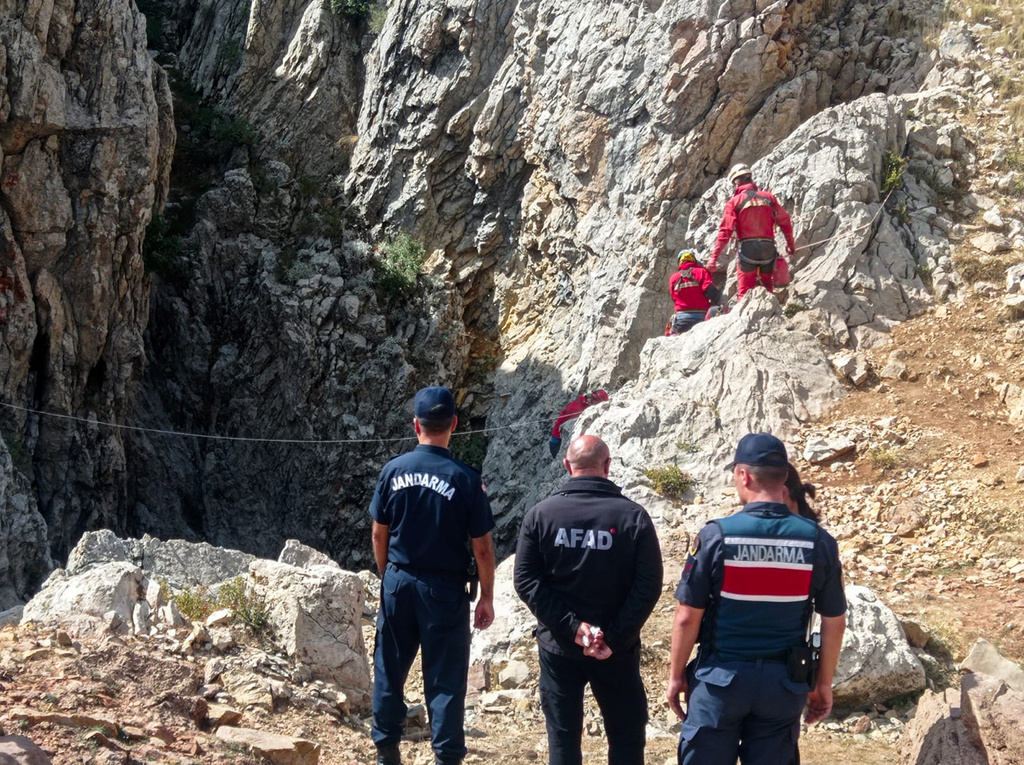Turkish and international cave rescue experts worked Thursday to reach an American researcher who got trapped inside a cave in southern Turkey at a depth of more than 1,000 meters (3,280 feet) after he became ill.
Mark Dickey, 40, was in Morca cave in southern Turkey’s Taurus Mountains when he experienced gastrointestinal bleeding, according to the European Cave Rescue Association. He was unable to leave the cave on his own, the association said on its website.
It described Dickey as “a highly trained caver and a cave rescuer himself” who is well known as a cave researcher, or speleologist, from his participation in many international expeditions. He is secretary of the association’s medical committee.
Dickey was on an expedition mapping the 1,276-meter (4,186-feet) deep Morca cave system for the Anatolian Speleology Group Association (ASPEG) when he was about 1,000 meters down, according to Yusuf Ogrenecek of the Speleological Federation of Turkey.
Ogrenecek told The Associated Press later Thursday that Dickey’s condition had stabilized and was improving. He said the American was in “good spirits” and doctors would decide if Dickey leaves the cave on a stretcher or under his own power.
Turkish disaster relief agency AFAD and rescue team UMKE are working with Turkish and international cavers on a plan to hoist Dickey out of the cave system, the rescue association said.
The rescue effort involved more than 170 people, including doctors, paramedics who are tending to Dickey and experienced cavers, Ogrenecek said, adding that the rescue operation could take up to two to three weeks. But it could take shorter depending on the situation.
A team of rescuers from Italy’s National Alpine and Speleological Rescue Team will be flying to Turkey on Thursday night. A total of around 50 rescuers will be at the entrance of the cave early Friday ready to participate in the operation directed by Turkish authorities.
Marton Kovacs of the Hungarian Cave Rescue Service said that the cave is being prepared for his safe extraction. Narrow passages are being widened to accommodate a stretcher, and the danger of falling rocks is also being addressed.
The rescue teams, which are from Hungary, Bulgaria, Italy, Croatia and Poland, hope that the extraction can begin on Saturday or Sunday. Kovacs said that lifting Dickey will likely take several days, and that several bivouac points are being prepared along the way so that Dickey and rescue teams can rest.
The cave has been divided into several sections, with each country’s rescue team being responsible for one section.
The Hungarian Cave Rescue Service, made up of volunteer rescuers, was the first to arrive at Dickey’s location and provided emergency blood transfusions to stabilize his condition. An additional Hungarian team of 15-20 rescuers will eave Hungary on Thursday evening on a military plane provided by the government and arrive at the rescue site on Friday morning, Kovacs said.
Six mountain rescuers, including two medics, have left for Antalya to help in the rescue operation, Jerzy Siodlak, the head of Poland’s mountain rescue service, GOPR, said Wednesday on Radio RMF24.
Thirteen other rescuers from southern Poland are also ready to join the rescue operation, GOPR authorities said. Siodlak noted the operation will be a challenging one given the condition of the American and the need to keep him medically fit for the rescue operation in difficult conditions.
He also stressed the need to provide the rescuers with light and communication possibilities at the depth the American is at.
(AP)











